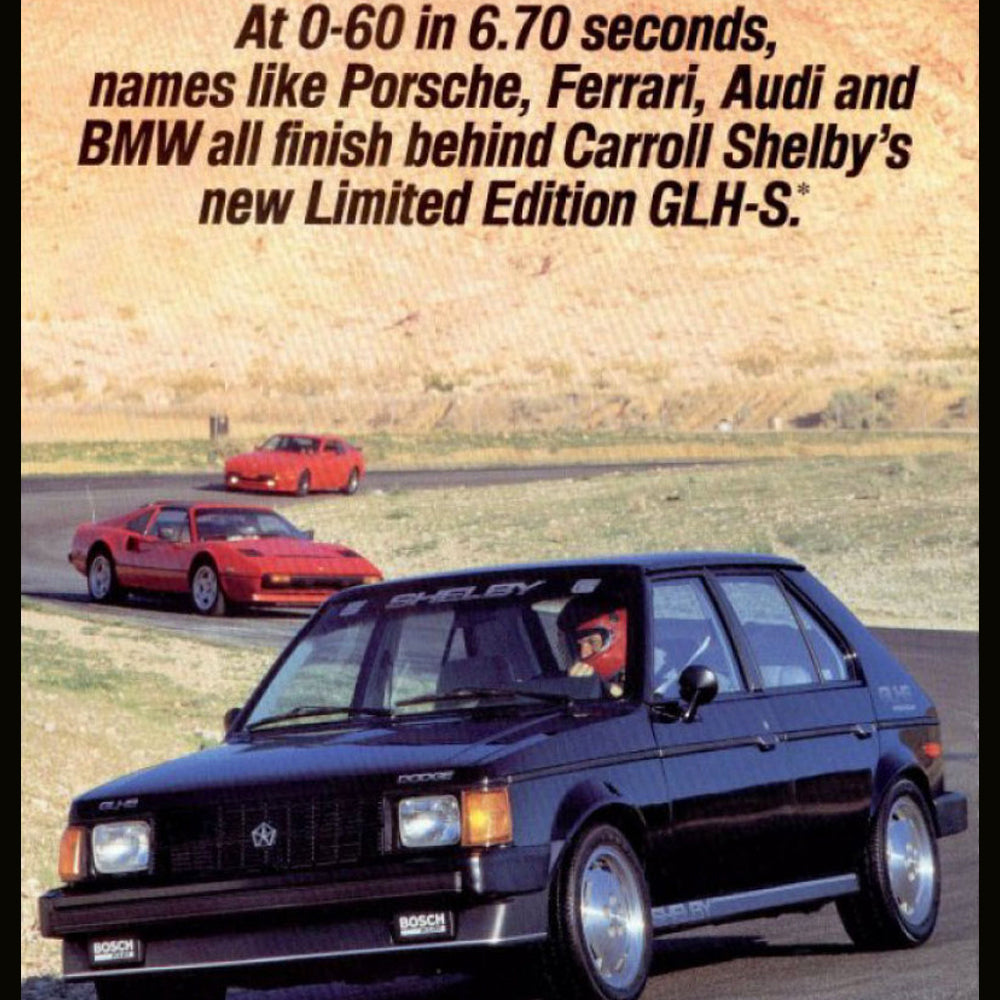My other reaction was that I don’t know anything about classic cars. So I told them this. “Guys,” I distinctly recall saying. “I don’t know anything about classic cars.” And then they laughed, and chuckled, and snickered, and giggled, and told me “Suuuuure, you don’t know anything about classic cars. Your first column is due Monday.”
The problem is that I actually don’t know anything about classic cars. I’m the guy at Cars and Coffee who walks by a ’62 Fairlane and a ’64 Impala and says to his friends: “I never knew Buicks used to look like that.” But rather than belabor the point, I decided to shut up and get to work, since these people are actually crazy enough to pay me money to write about cars.
So I’ve decided to write about cars that are classics to me. And my first choice is the 1984-1986 Dodge Omni GLH and GLH-S.


Now, if you’re a car enthusiast, you probably already know about the Omni GLH. In fact, I think there are more videos, articles, and columns about the GLH than there are actual GLHs in existence. This is verified by a quick search on AutoTrader, then cars.com, then Craigslist, then Hemmings, where not a single GLH can be found. This is probably because they were all wrapped around trees by third-owner high school students around 1994.
But there’s a good reason the GLH gets so much press: it’s freaking awesome. Oh, and it has a curse word in its name. We’ll take these attributes individually.
For the freaking awesome part, I turn to a little GLH background. Imagine a time, if you will, where your typical compact car is making 75 horsepower. (Europeans are thinking: Uh… 2014?) And now imagine an automaker coming out with a high-performance version that increases that figure by 50 percent.
Now, this might not be too hard for many of you to imagine, because it happens a lot. The regular Ford Focus has approximately 160 horsepower, for instance, while the Focus ST has roughly 947 horsepower, all of which comes through the front wheels. It also has a rear wing that you could use, in a pinch, as a snowboard.
However the Omni GLH was special because it came out at a time when “performance version” meant adding a spoiler and, if you were lucky, some body-colored wheels. Here I am thinking of the late-1970s Chevrolet Chevette “Rally,” which boasted an eight horsepower increase over the standard model’s 52 ponies. Vroom, vroom.

Unlike the Chevette, the Omni GLH wasn’t kidding around. The initial model featured a 110-horsepower naturally-aspirated 4-cylinder, while a 146-hp turbocharged powerplant joined in 1985. This may not seem like much, but the Omni weighed in at just 2,200 pounds, which meant the thing was really fast. It also meant the 1985 Omni GLH had double the power of a standard Omni. For perspective, imagine a modern Honda Civic with 290 horsepower.
But even that wasn’t enough for the folks responsible for tuning the Omni, who were obviously consuming some sort of mind-altering drugs. (NOTE: Carroll Shelby was involved. We’ll get to that in a minute.) That’s because the 1986 model year saw the arrival of the limited-production Shelby GLH-S, which offered a full 175 horsepower thanks to increased boost and various other upgrades under the hood. Zero-to-60 came in just 6.5 seconds, which was a second slower than the V8 Ferrari of its day. Now imagine a 330-horsepower Honda Civic that does 0-to-60 in 4.3 seconds.
But in spite of its excellent performance, the Omni’s best feature was its name. “GLH” stood for “Goes Like Hell,” reportedly at the request of Carroll Shelby himself, as the cars were tuned with the help of his company. And the “GLH-S?” Supposedly, that stood for “Goes Like Hell, Some more” – although there are conflicting reports about whether the “S” simply meant “Shelby” (Most insist it stands for “Some more,” but that just sounds too ludicrous to be true).
Either way, the Omni GLH and GLH-S should hold a special place in the minds of anyone fond of the hot hatch. It certainly does for me, considering I keep browsing the Internet for a nice used one. And when I finally find it, I’ll bring it to Cars & Coffee and proudly display it next to the all the Fairlanes. Or the Impalas. Or the Buicks. Or whatever.


Image Sources:flickr.com ,hemmings.com ,mydaygarage.com




















































